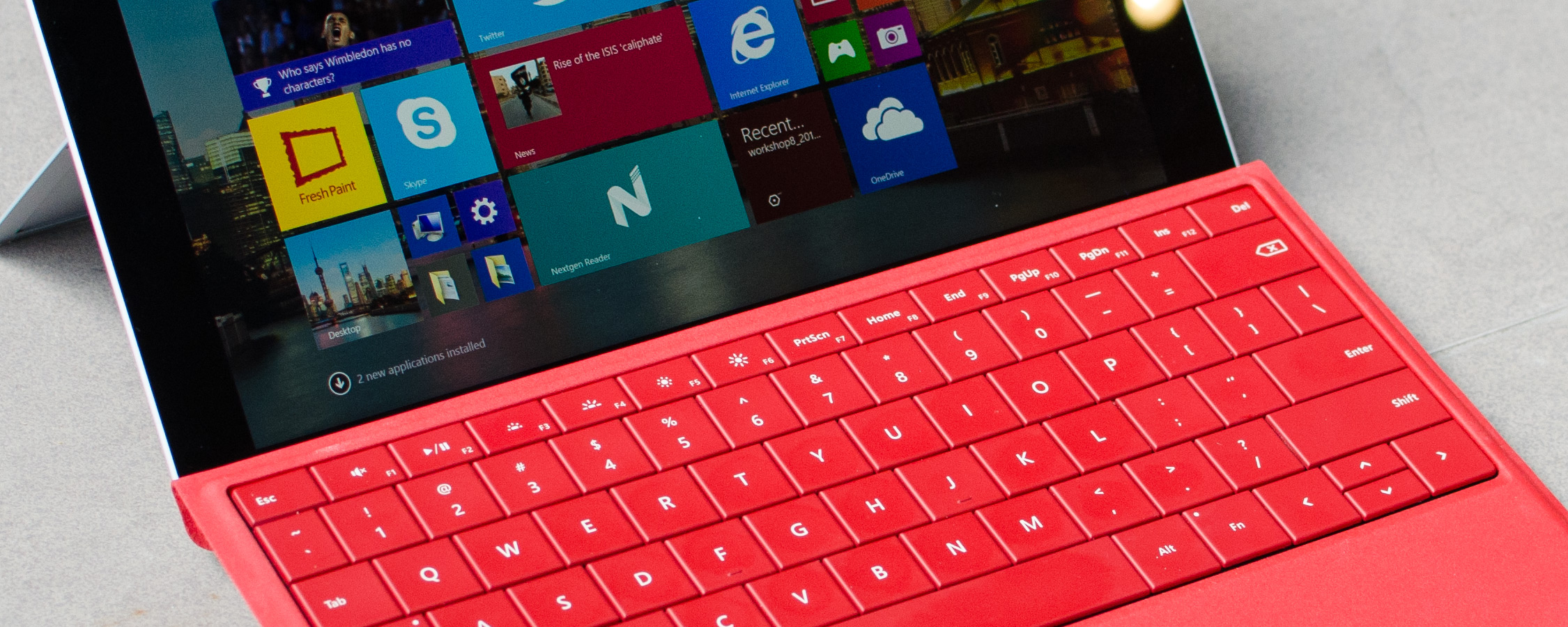Performance
From the Surface 2 to the Surface 3, Microsoft has completely overhauled the tablet's hardware. The company has completely ditched ARM hardware, allowing Windows RT to die a quiet death, in favor of Intel Inside and fully-fledged Windows 8.1 with an easy upgrade to Windows 10 in a month's time.
The Surface 3 is powered by an Intel Atom x7-Z8700, which is one of Intel's new 14nm Cherry Trail SoCs built on the company's 14nm manufacturing process. The chips are a decent upgrade on the Bay Trail products we've seen in the market since 2013, bringing faster CPU cores, better power management and faster graphics along with full 64-bit support.
The Atom x7-Z8700 features four Airmont CPU cores clocked at 1.6 GHz with a Turbo frequency of 2.4 GHz. The SoC comes with 2 MB of L2 cache, a dual-channel LPDDR3 memory controller providing 25.6 GB/s of bandwidth, and 8th generation Intel HD Graphics based on the same GPUs the company used in their Broadwell CPUs. The GPU in this SoC is clocked between 200 and 600 MHz.
Microsoft claims the Surface 3 "offers more than 80% of the performance of Surface Pro 3 with Intel Core i3 processor", which is a big claim to make considering the significantly reduced TDP of this Atom chip. Intel says the Z8700 has a "scenario design power" (SDP) of 2W, versus an 11.5W TDP for Haswell-Y.
The Surface 3 comes in two SKUs: a model with 64 GB of NAND and 2 GB of RAM, and a 128 GB model with 4 GB of RAM. I'd ideally like to see all Surface 3's come with 4 GB of RAM considering this tablet can run x86 desktop apps that can use a fair bit of memory. Interestingly, for this review Microsoft sent me a 64 GB model with 4 GB of RAM, which as far as I can tell is an SKU not available for purchase.
Other hardware found in the Surface 3 includes Wi-Fi 802.11a/b/g/n/ac connectivity, Bluetooth 4.0, a 3.5-megapixel front facing camera, and an 8.0-megapixel rear facing camera.
During my time with the Surface 3, there's no doubt that this tablet has some serious power under the hood for everyday tablet tasks. Loading apps was snappy, browsing the web on Internet Explorer felt surprisingly fast, and there was no time while using Modern apps that I felt the Surface 3 was underpowered. Compared to the ARM-based Surfaces, the Surface 3 is certainly a hell of a lot faster.
Due to the size of the Surface 3, I didn't use the desktop all that often, aside from checking out Chrome's performance and running a few applications. This isn't really the sort of device I would run Photoshop or video editing tools on, and when I did test out Photoshop, it performed acceptably so long as I wasn't applying any crazy filters or working with massive files. Video editing and other high performance tasks - large Excel spreadsheets slowed down the Surface quite a bit, for example - are basically out of the question on the Surface 3 due to limited CPU power.
Gaming on the Surface 3 is an interesting one. Of the Windows Store apps I tried on the tablet, all worked perfectly fine at the device's native 1920 x 1280 display resolution, which isn't hugely surprising. However, as this device runs full Windows 8.1, you can also install basically any PC game you like, for better or worse.
As you might expect, the Surface 3 seriously struggles when faced with a GPU intensive game, which basically rules out most games released in the past 5-8 years. Some older titles may work at low quality settings or lower display resolutions, and it's nice that you can at least try to play some PC games on the Surface 3, but I'd typically stick to Windows Store titles or less intensive games available through Steam.
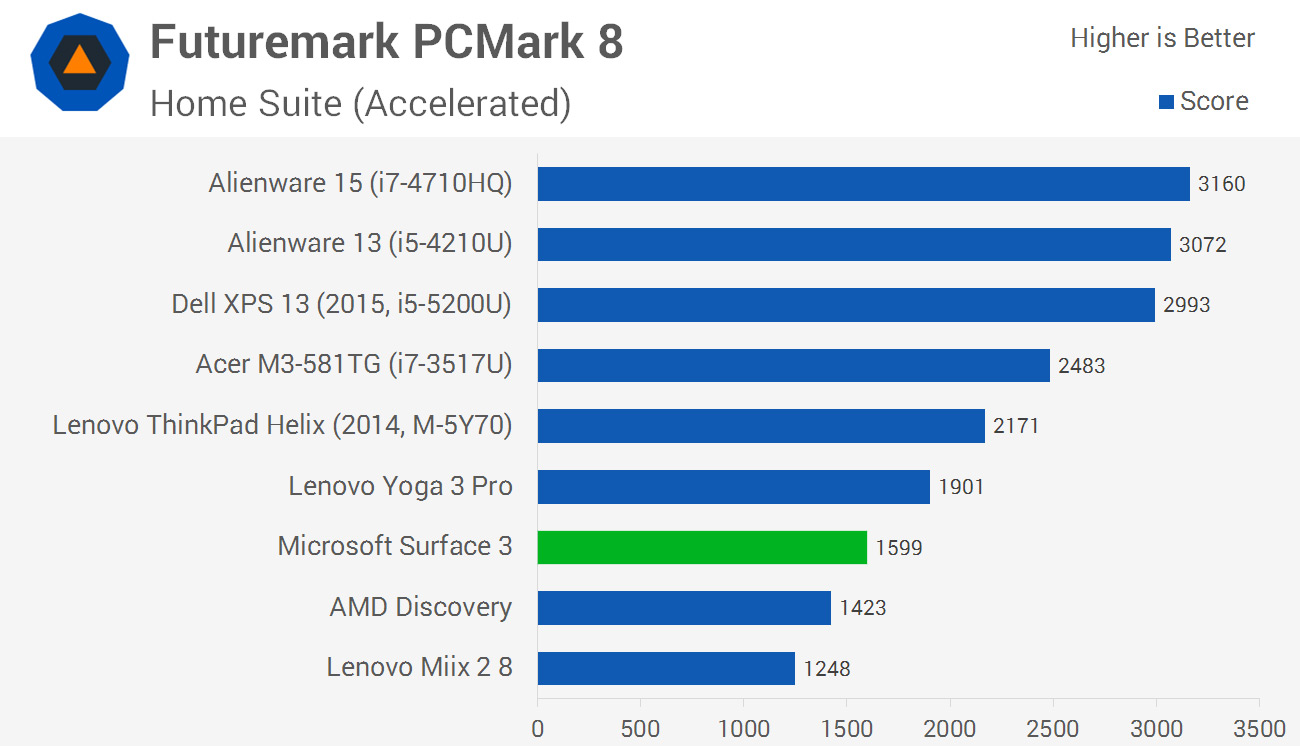
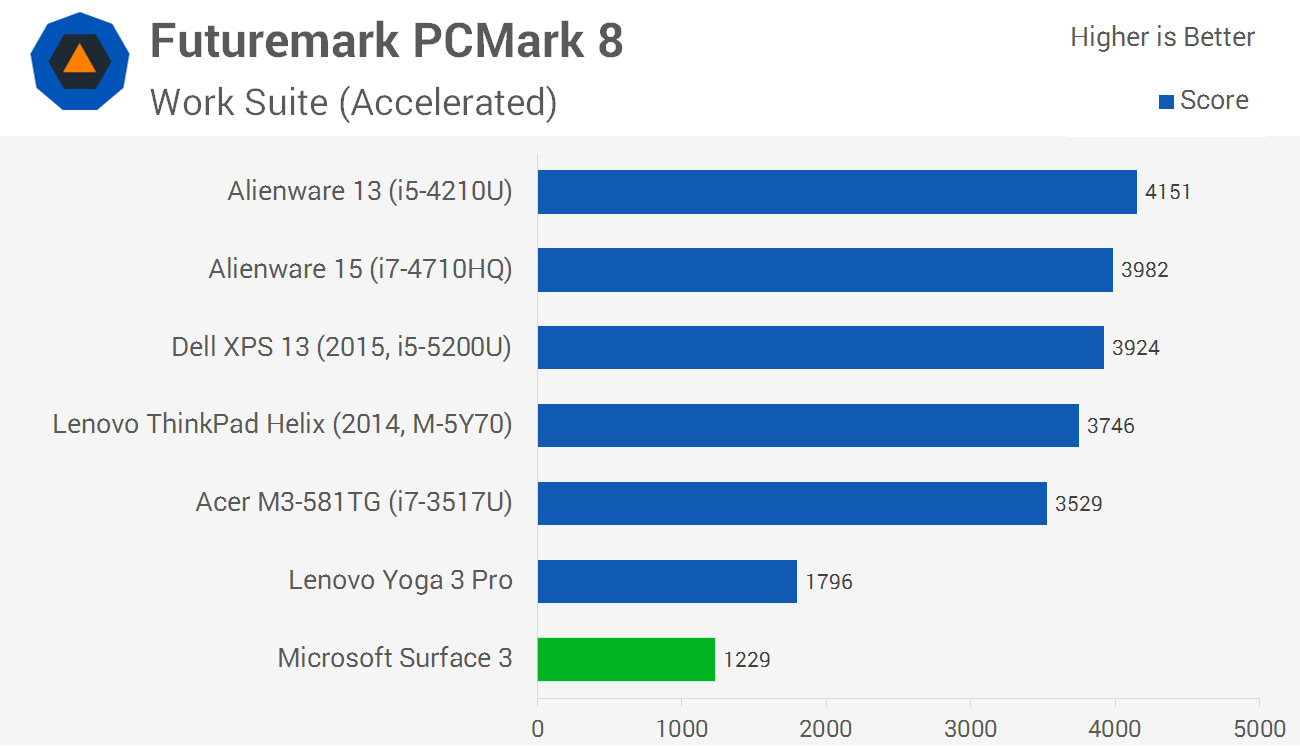
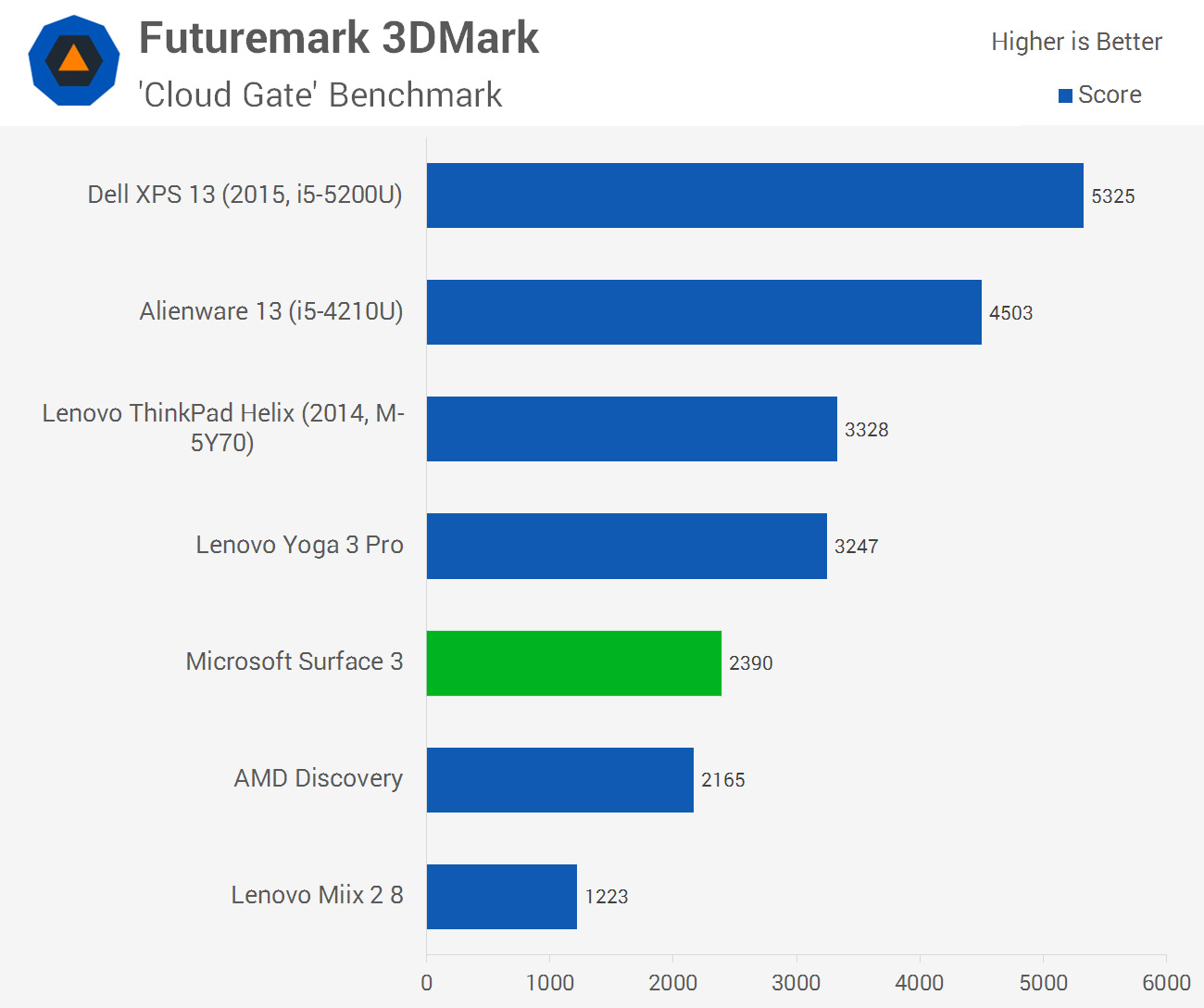
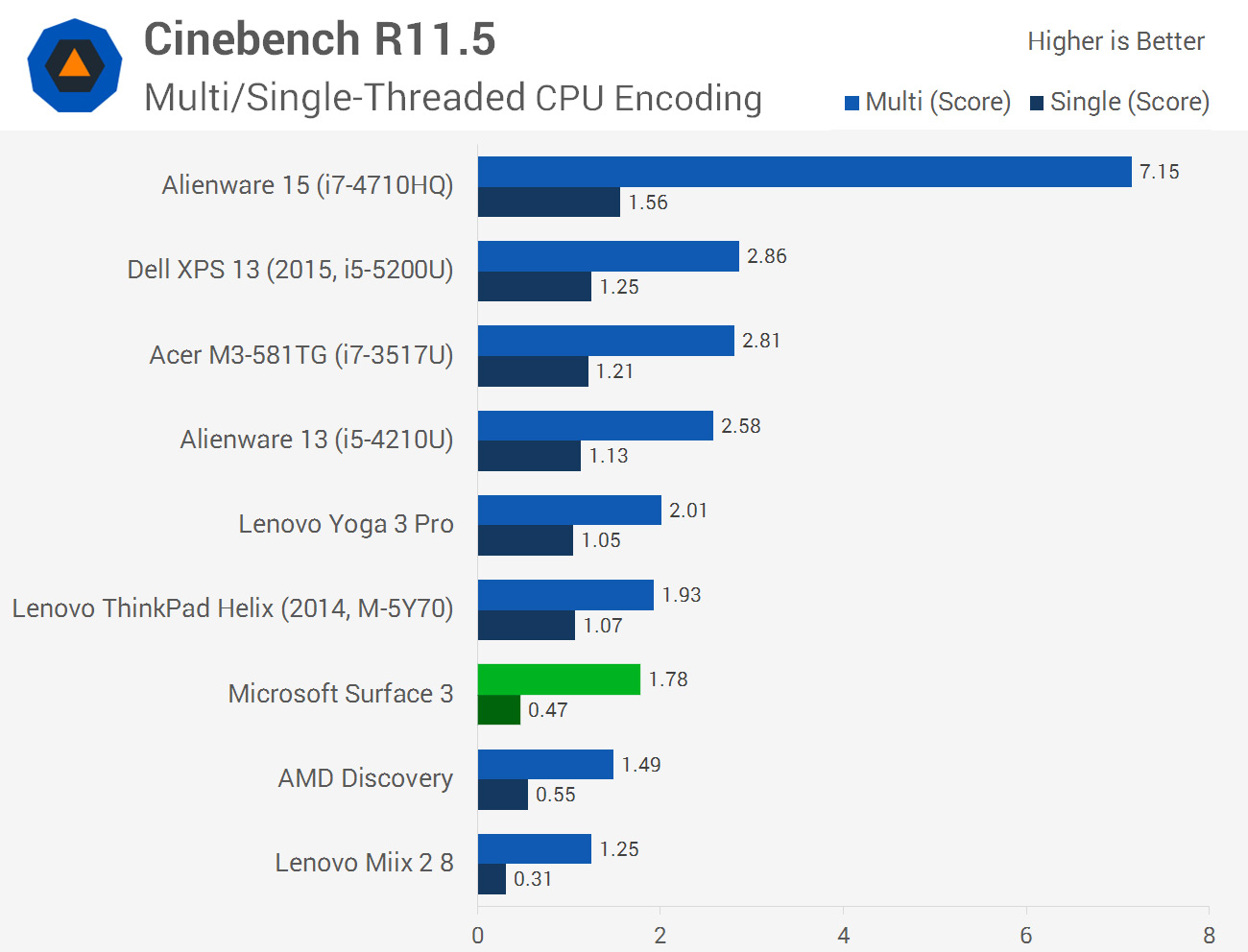
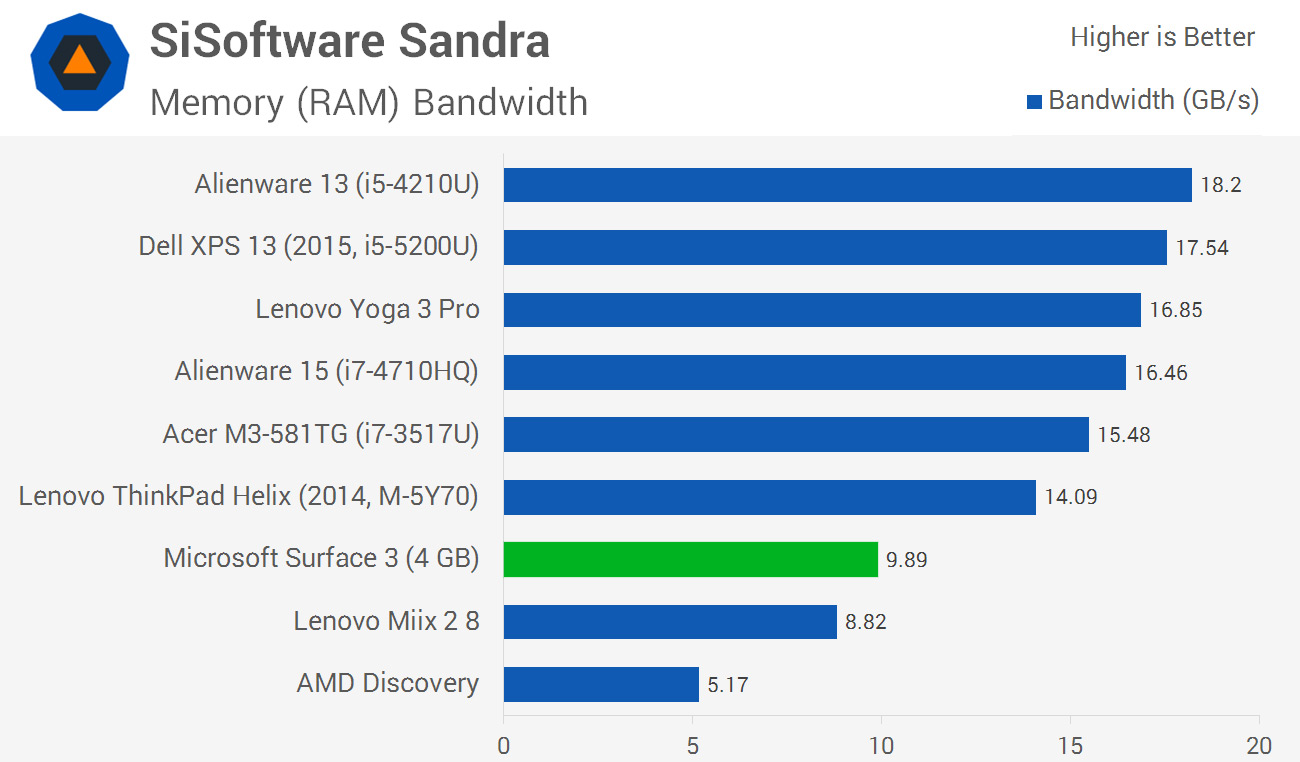
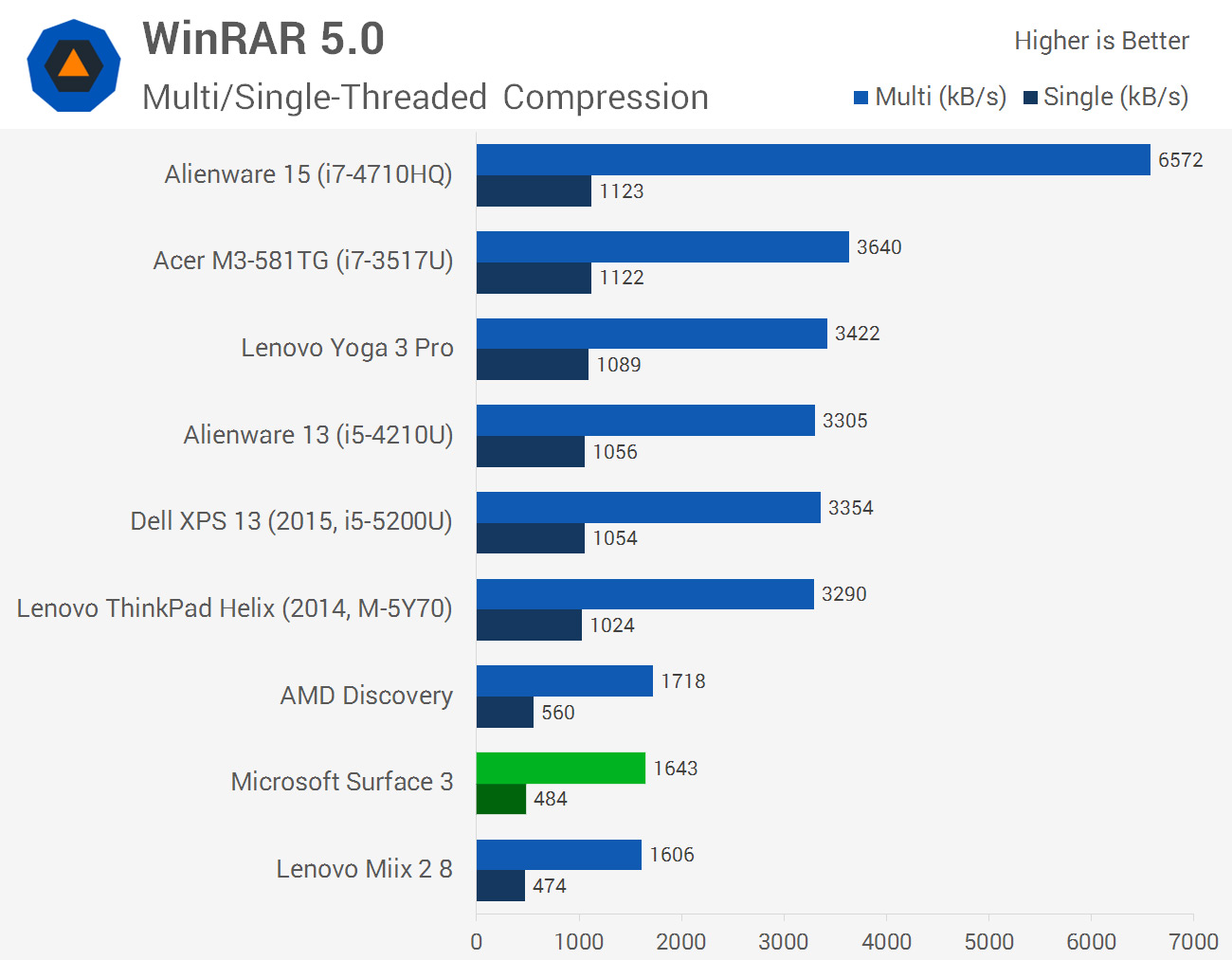
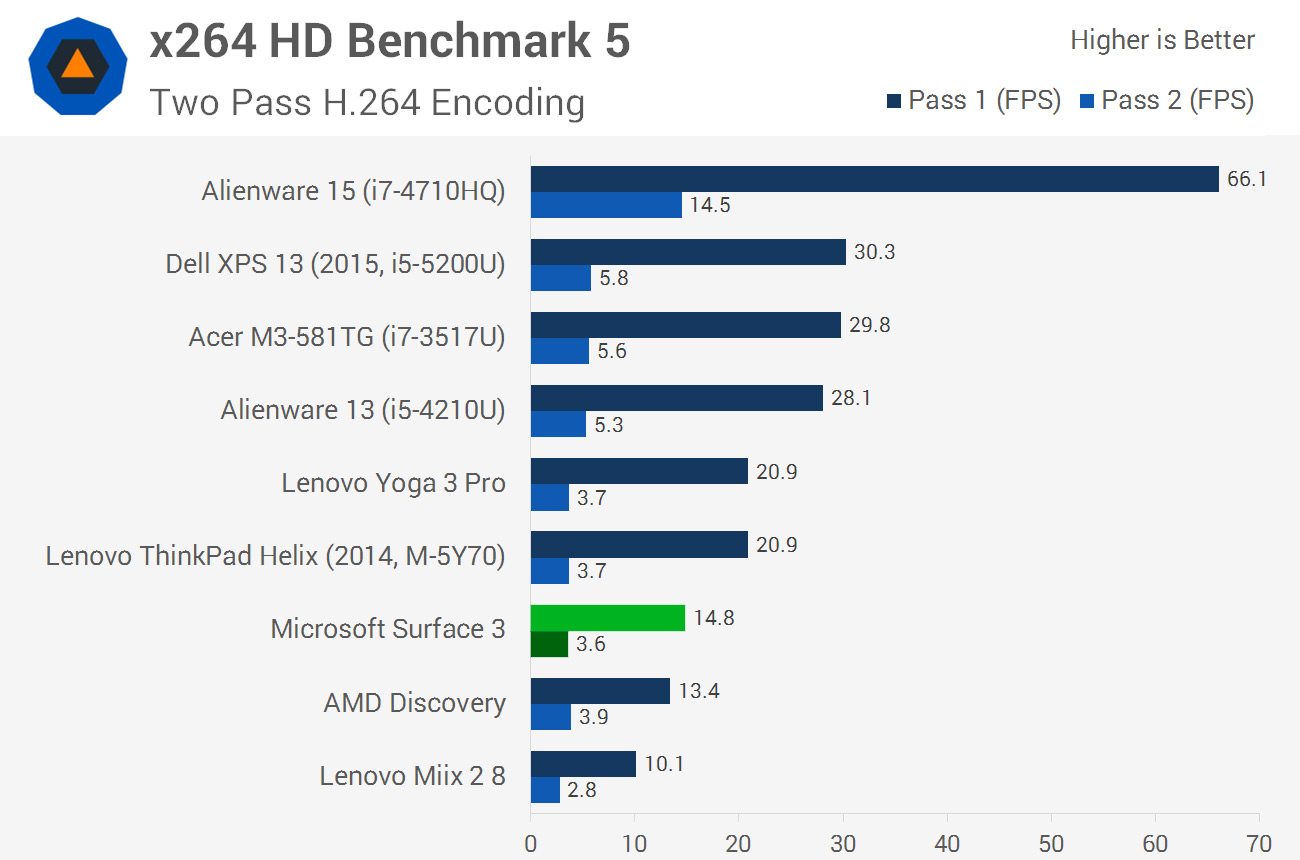
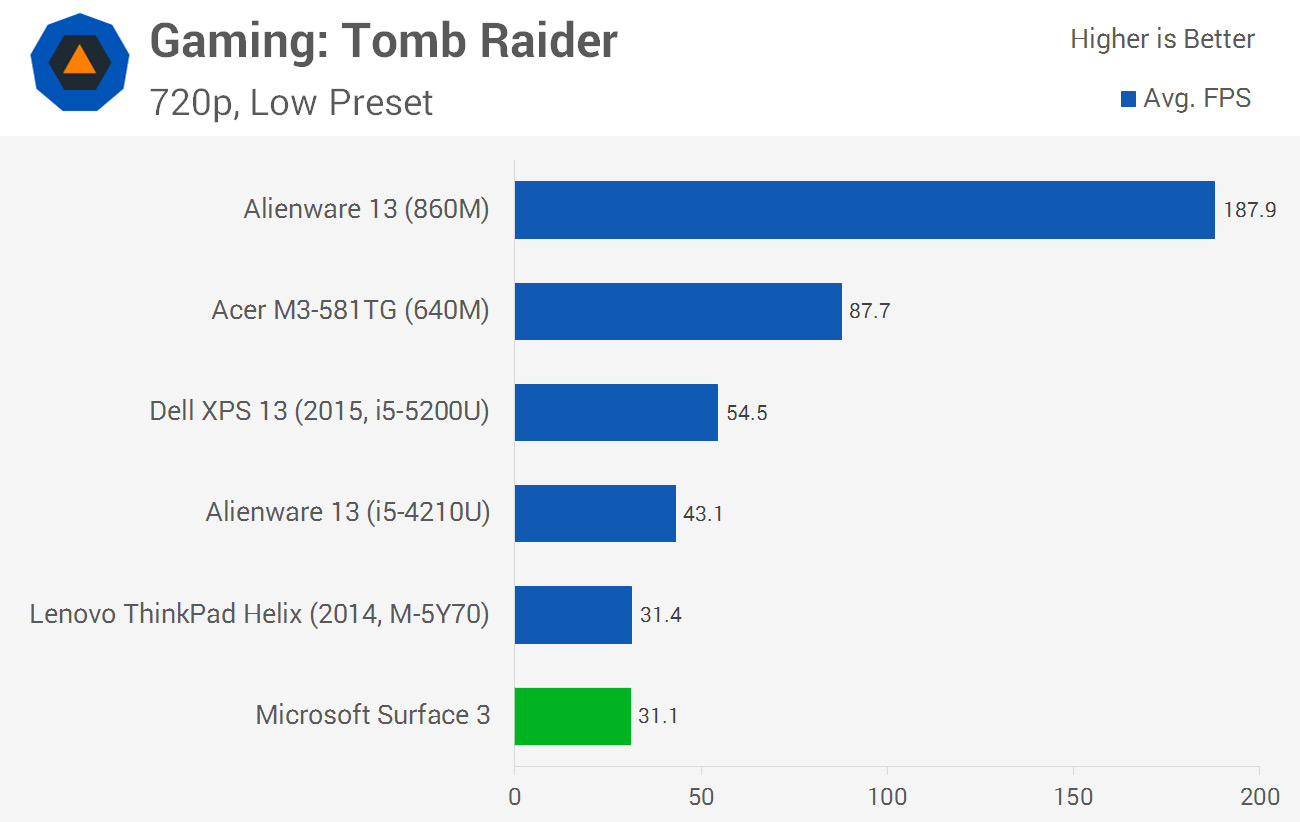
In general we're seeing a 30-40% improvement in CPU performance compared to Intel's previous-generation Bay Trail SoCs, which is pretty impressive. Graphics performance has also improved quite significantly, as you can see from the Surface 3's 3DMark results.
However,we're seeing the performance of the flagship Cherry Trail SoC in the Surface 3 trail Intel's Core M CPUs by around 25-30%. This leads to a pretty significant difference between Cherry Trail and Haswell, as you'd expect considering the large difference in TDPs.
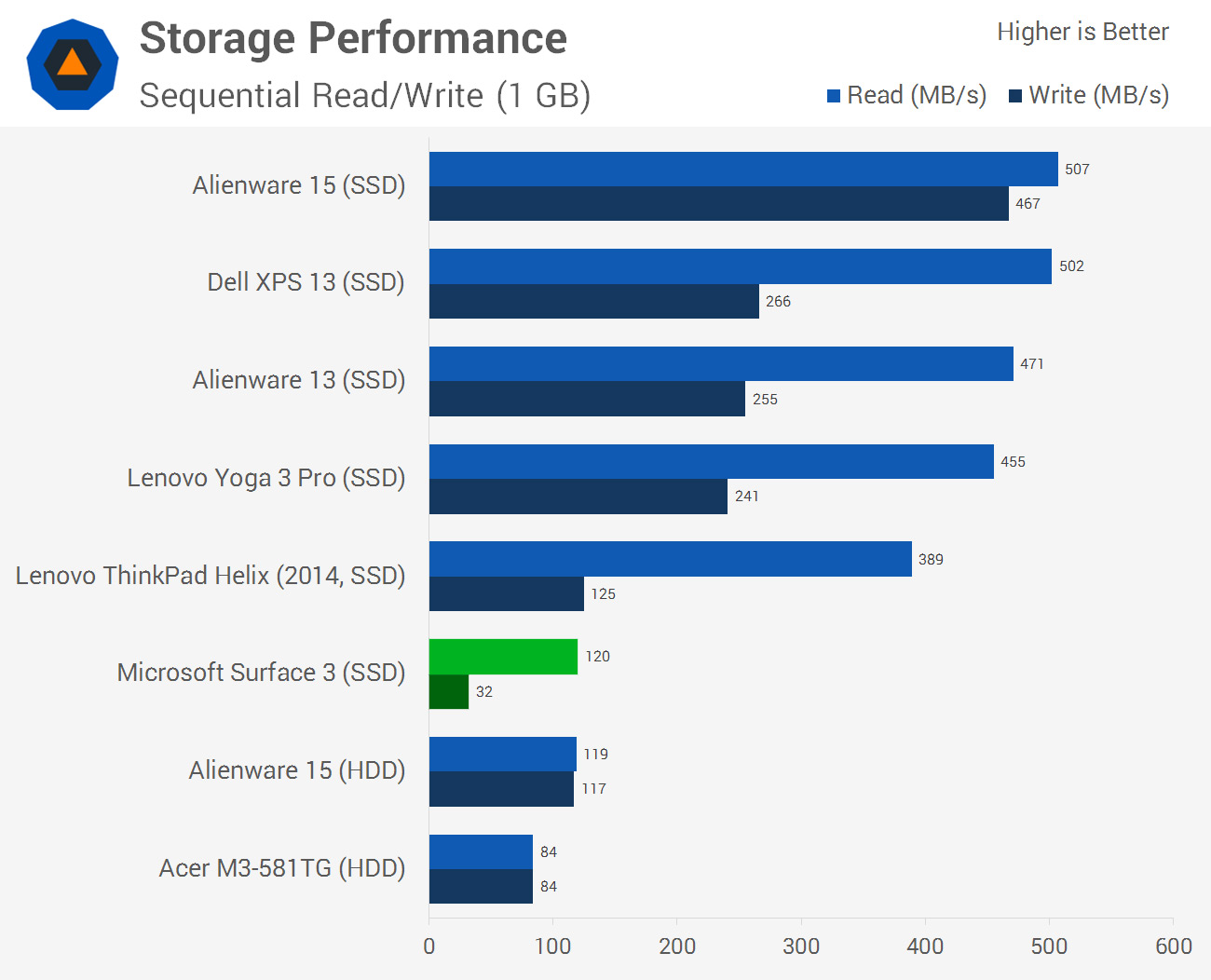
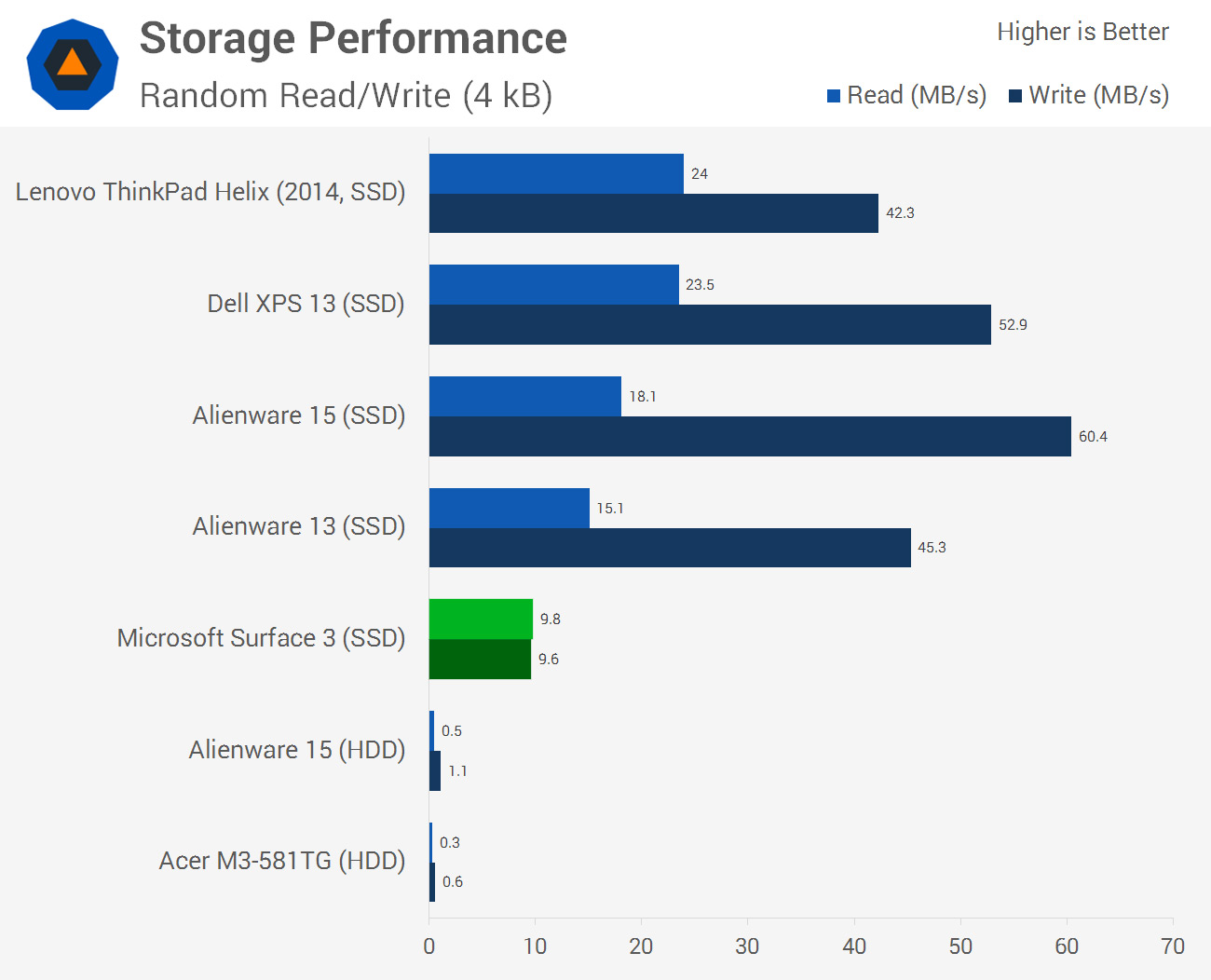
The Surface 3's NAND speeds were particularly disappointing, falling well behind some of the other laptops and tablets I've reviewed recently.
